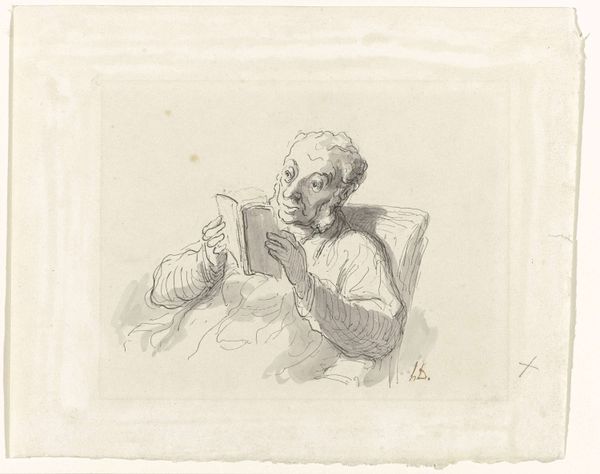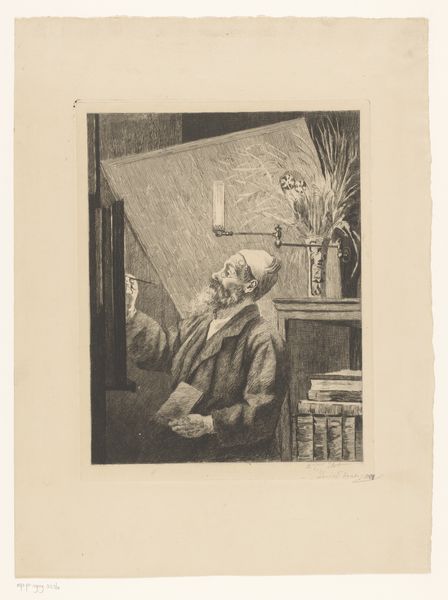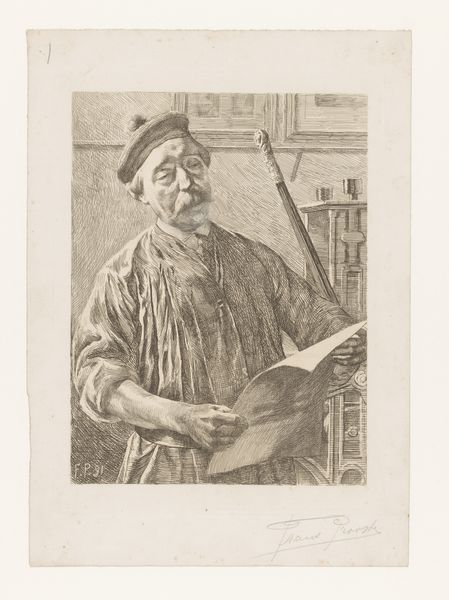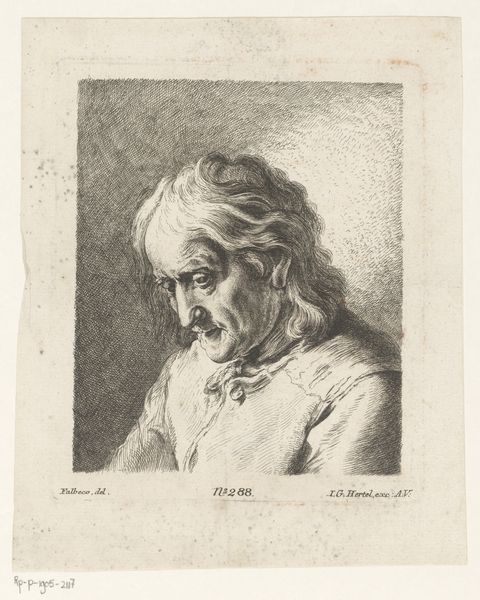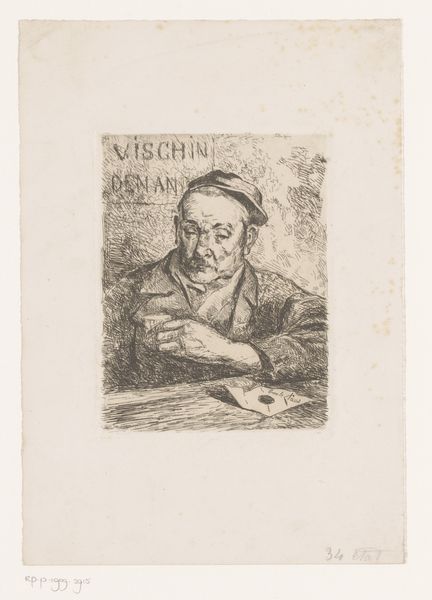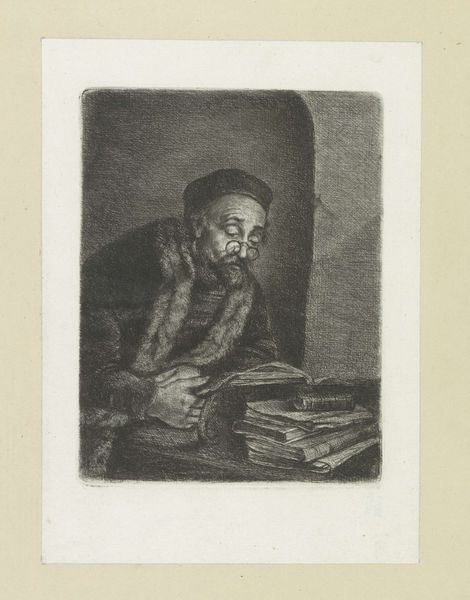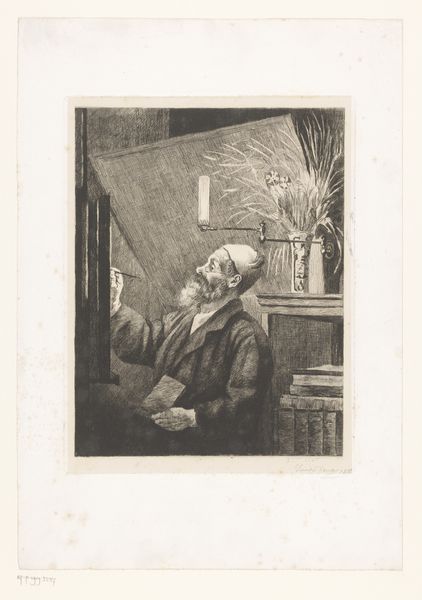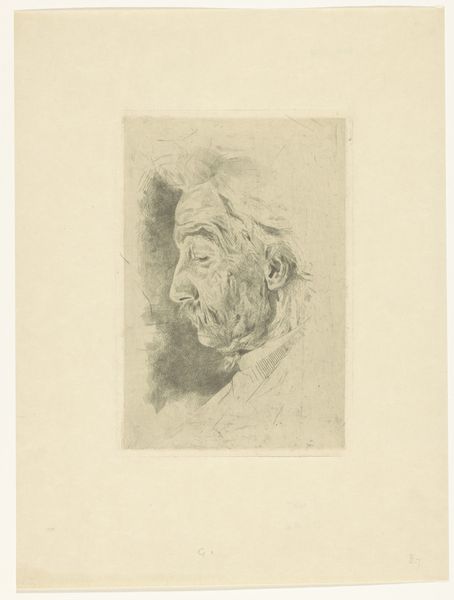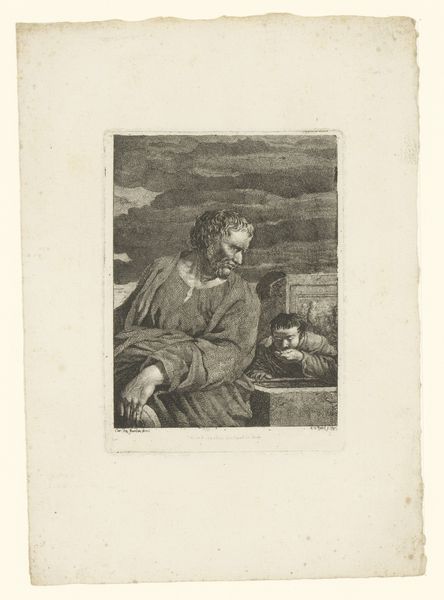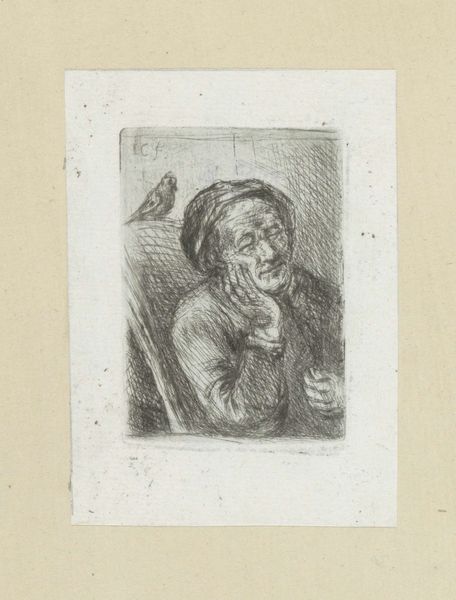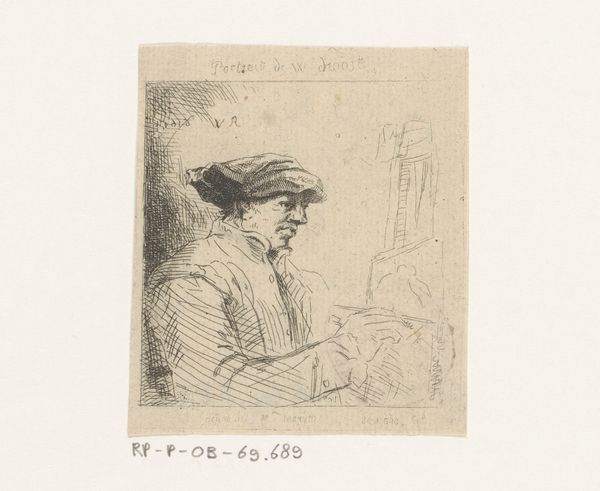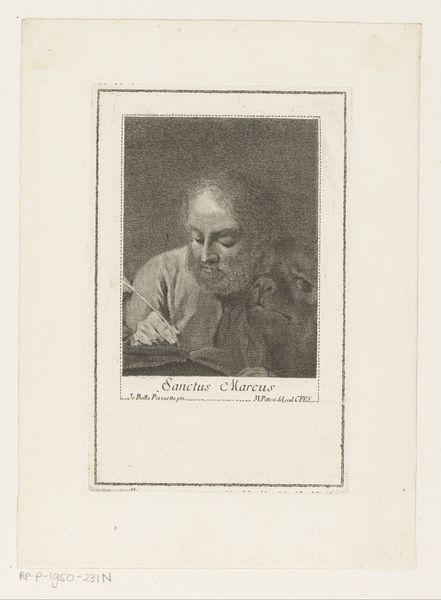
print, engraving
#
portrait
# print
#
book
#
pencil sketch
#
old engraving style
#
romanticism
#
genre-painting
#
engraving
#
realism
Dimensions: height 80 mm, width 102 mm
Copyright: Rijks Museum: Open Domain
Editor: Here we have "Buste van een oude vrouw met een liedboek in haar handen," or "Bust of an old woman with a songbook in her hands," a print made sometime between 1788 and 1846 by Christian Gottlieb Geyser. It’s an engraving, a small, intimate portrait. It strikes me as quite humorous, even a little satirical. What do you see in this piece? Curator: Well, looking at this from a historical perspective, what's striking is how this seemingly simple portrait participates in a broader conversation about aging and representation. The very act of creating and displaying an image of an older woman, especially with such visible details of age – the wrinkles, the nose – it’s a statement about whose stories and appearances are considered worthy of preservation and dissemination. Who do you think was this print targeting? What was the function of genre painting during that period? Editor: Hmm, maybe it's aimed at a rising middle class, keen on displaying art that reflects everyday life? Something relatable, perhaps even didactic? A reflection of moral values of that era? Curator: Precisely! The interest in the everyday was booming among the bourgeoisie, making the 'genre' scene incredibly fashionable. Also, notice her book – “Recueil de Poesies nouvelles par Differens Auteurs”. Prints like these became affordable reproductions that gave access to poetry and stories circulating at the time. Art became democratized. Editor: That's fascinating. I hadn’t considered the socio-economic impact of printmaking on accessibility of art and literature to larger audiences. The context changes the meaning significantly. Curator: Exactly. Consider the artwork’s role within societal shifts of literacy and expanded forms of civic and cultural engagement. I’m now considering if these engravings created spaces for critical conversations and social change. What do you think? Editor: Definitely, food for thought. I appreciate your pointing out the broader implications; I'll definitely view prints with a wider scope in the future.
Comments
No comments
Be the first to comment and join the conversation on the ultimate creative platform.
